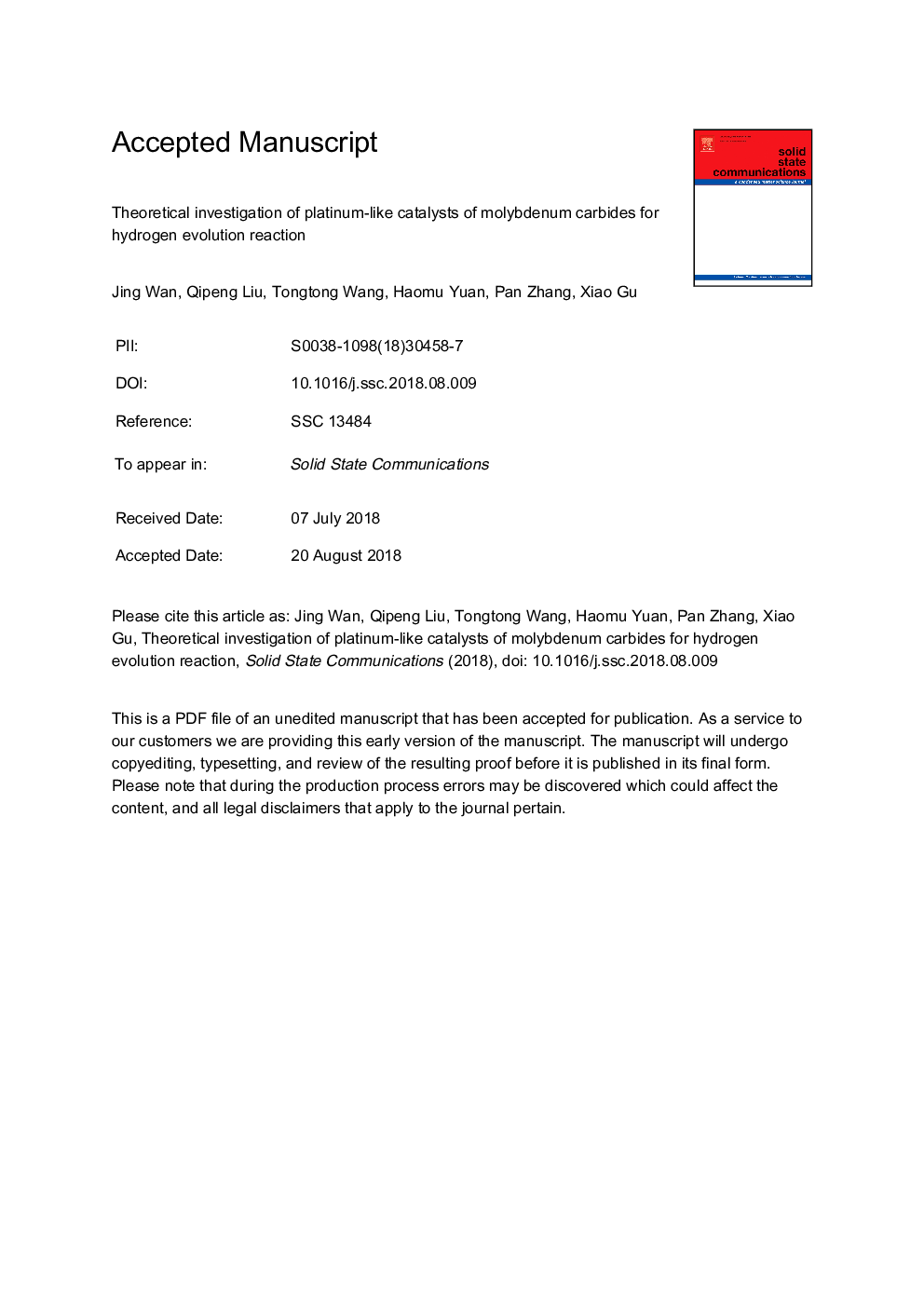| Article ID | Journal | Published Year | Pages | File Type |
|---|---|---|---|---|
| 10155918 | Solid State Communications | 2018 | 18 Pages |
Abstract
Developing high-active, stable and low-cost hydrogen evolution reaction (HER) catalysts is essential for industrial hydrogen production. Herein, a systematic study of the structures of molybdenum carbides and the related HER mechanism have been carried out based on density functional theory (DFT) calculations. The electronic properties and surface energies of three typical crystals of molybdenum carbides, i.e., α-MoC, β-MoC and γ-Mo2C, have been analyzed. It is shown that all the systems considered exhibit metallic behavior, among which the β-MoC (110) plane is the most active facet with the largest surface energy (3.159 J·mâ2). By comparing the Gibbs free energies, ÎG(H), we find that the (111) surface of β-MoC has the smallest ÎG(H) of 0.089â¯eV, which is even superior than Pt-like catalysts, V8C7 (-0.114â¯eV), VC (â0.191â¯eV) or MoO2 (0.15â¯eV).
Related Topics
Physical Sciences and Engineering
Materials Science
Materials Science (General)
Authors
Jing Wan, Qipeng Liu, Tongtong Wang, Haomu Yuan, Pan Zhang, Xiao Gu,
